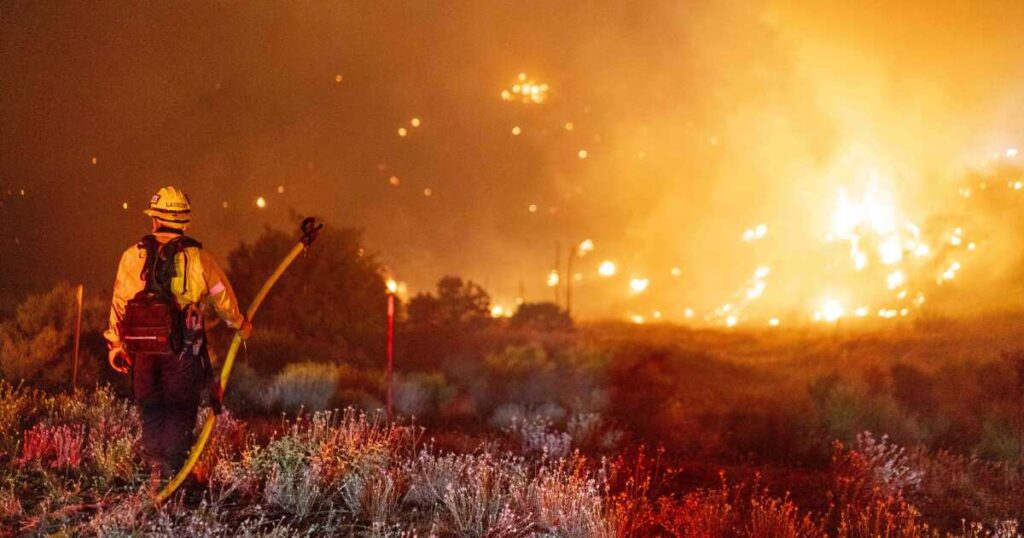Fire risk for western U.S. increases in August

Eighty-nine large wildfires are active across the U.S. as of August 6, according to the National Interagency Fire Center. Wildfires have burned over 4.5 million acres since January of this year, 123% above the 10-year average of acres burned. However, the number of wildfires remains below average at nearly 82%.
July overall saw increased wildfire activity throughout the month, with high activity in western areas of the country. The National Preparedness Level, determined by nationwide weather conditions and fire activity or fire suppression resources, scores preparedness on a scale of one to five, with one as the lowest level of risk and five as the highest. The national level increased to four on July 10 and jumped up to five on July 18.
California’s largest wildfire of the year thus far is nearly 30% contained by firefighters as of Aug. 3 and has burned over 400,000 acres. This is now the fourth largest wildfire in the state’s history.
Further predictions of the wildfire outlook for August through November show significant potential for increased activity. Areas in the western U.S. are likely to experience above normal wildfire potential in the coming months, specifically in August and September.
In a Travelers Institute webinar, “Wind, Hail, Rain, Fire: LIVE from IBHS,” experts from the Institute for Business & Home Safety (IBHS) Research Center shared a look at the technology they use at the research center to prevent or mitigate weather-related damages. This includes losses from perils such as wildfires, as well as high winds, hailstorms and water damage.
The IBHS shared a wildfire demonstration that the organization uses in its research to better understand the causes and impacts of severe fire damage on homes and businesses. These insights can be used to inform policyholders, agents, brokers and potential homeowners of wildfire safety measures.
Faraz Hedayati, lead research engineer at IBHS, shared information about the program Wildfire Prepared Home, developed by IBHS. This program provides homeowners with a checklist guide, which gives actionable steps to protect their properties and mitigate damages. Hedayati said that the program looks at “the entire building as a system” for safety recommendations or building code requirements to reduce wildfire risk. This includes taking an overall look at a property to remove potential fire risks, such as combustible shrubbery or plants surrounding a home or flammable debris on the roof and in gutters. Eligible applicants, who must reside in California, that successfully complete the requirement will receive a designation certificate of home wildfire preparedness.
“The vulnerability of homes to wildfire, in my opinion, is very similar to the vulnerability of humans to cyber attacks. It takes the weakest link to lead to catastrophic damage, and that could be a short password…” said Hedayati. “When we look at the wildfire scenario, it could be just an unprotected vent, it could be just an open window or not maintaining zero to five-foot defensive space around homes. The whole system should come together to protect homes.”
Hedayati also added that safety information about wildfire preparedness against flame or ember vulnerability can be found at the Wildfire Prevention website, created and managed by the California Inland Empire Council, Scouting America (CIEC).



